
Workforce shortages within community pharmacy has been a hot topic over the past year, with pharmacists added to the Home Office’s shortage occupation list in March 2021, and respondents citing lack of staff as a barrier to doing their jobs properly in The Pharmaceutical Journal‘s 2021 salary and job satisfaction survey.
The first national workforce survey to take place in Wales, in 2019, found national vacancy rates of 6% for community pharmacists. A similar survey in Scotland in 2020 found a vacancy rate of 12% for employed community pharmacists and 0.18% for locum pharmacists.
Now, a long-awaited workforce report from Health Education England — an update to its 2017 findings — reveals that the number of community pharmacists has increased, from 23,284 in 2017 to 27,406 in 2021.
However, it appears that demand for community pharmacists across England has risen, with the vacancy rate doubling over the past four years to 8%, and there are even higher vacancy rates recorded for other members of the pharmacy team.
Below is a detailed look at shortages within essential roles that make up the pharmacy team.
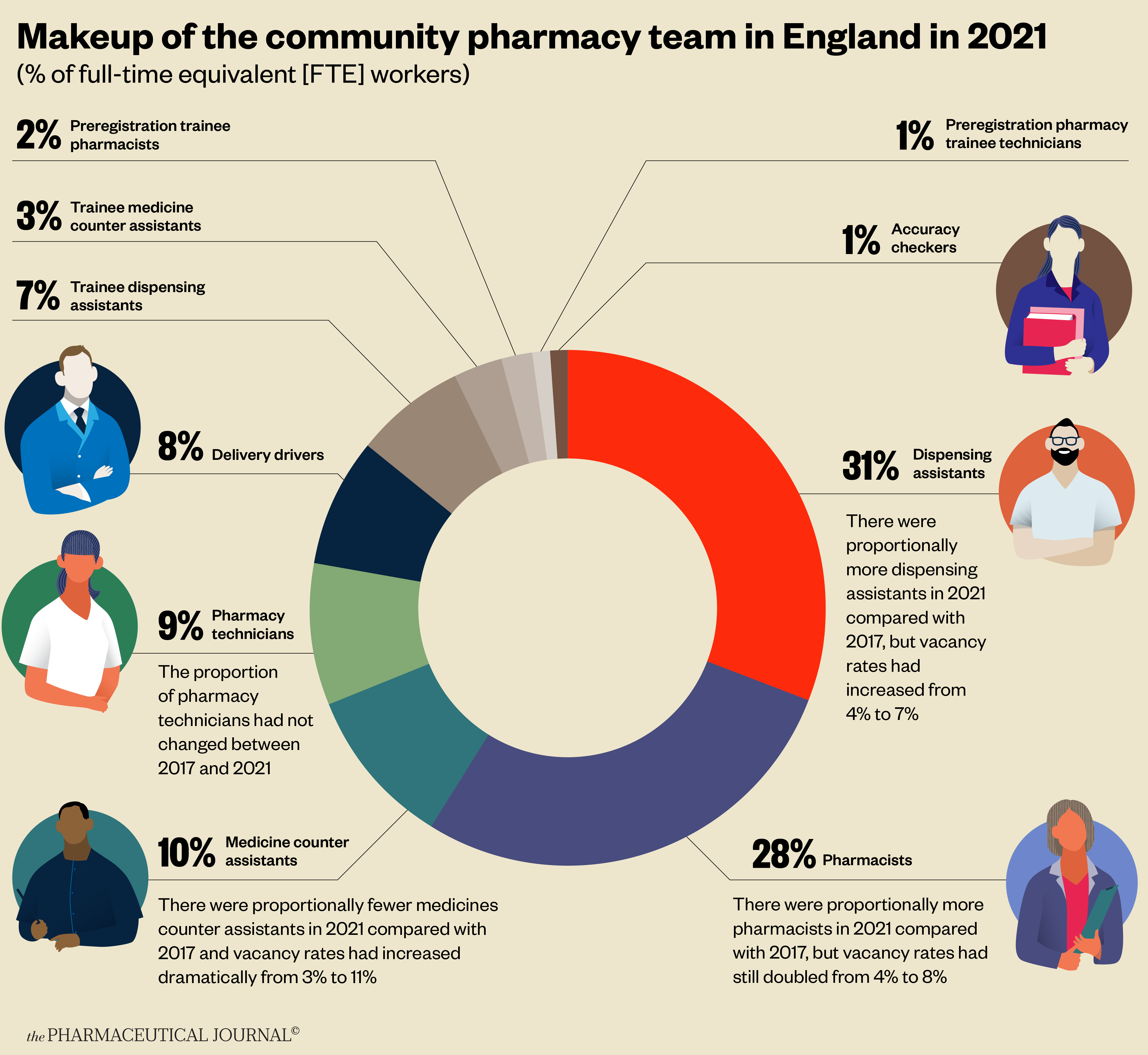
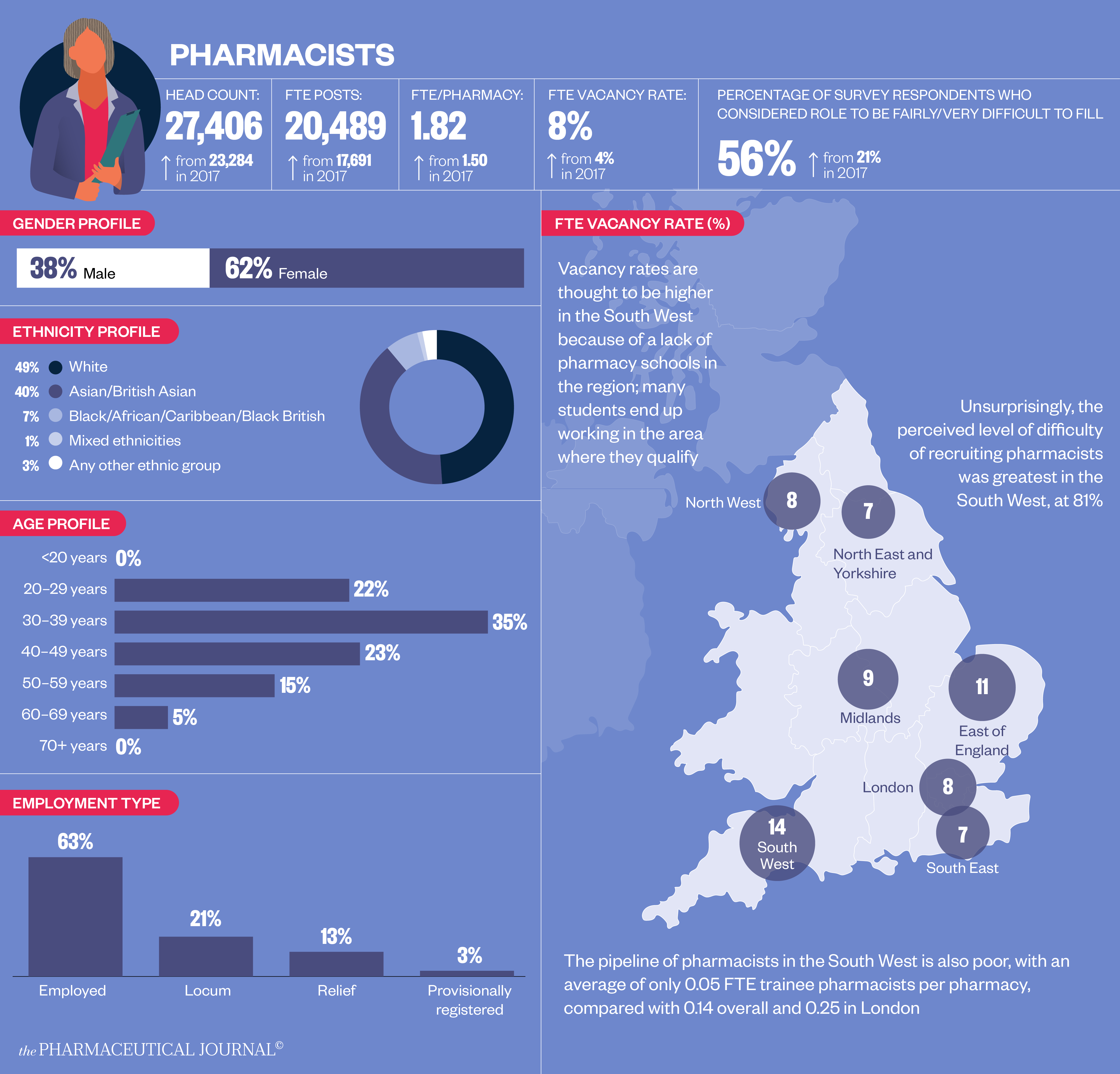
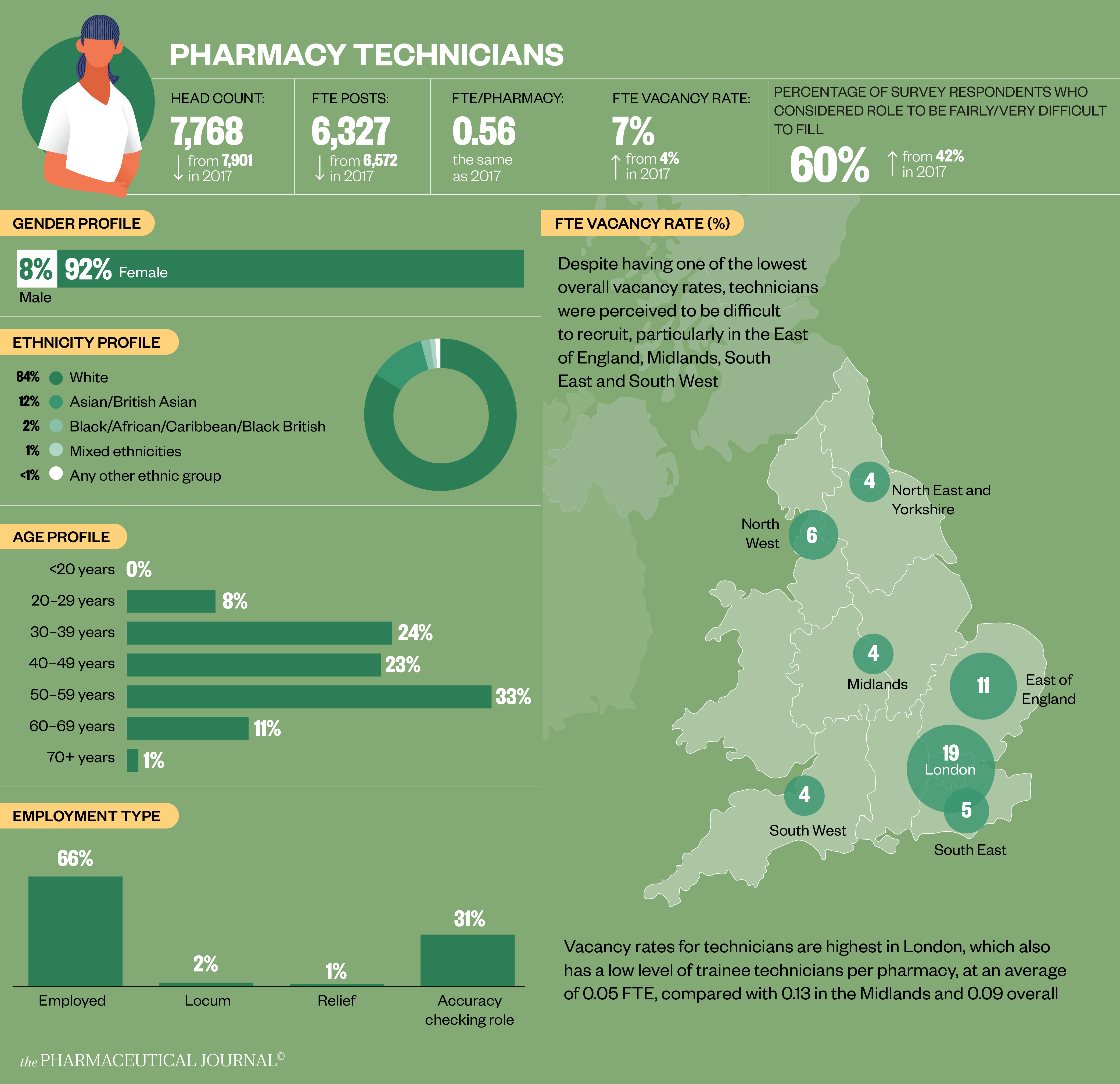
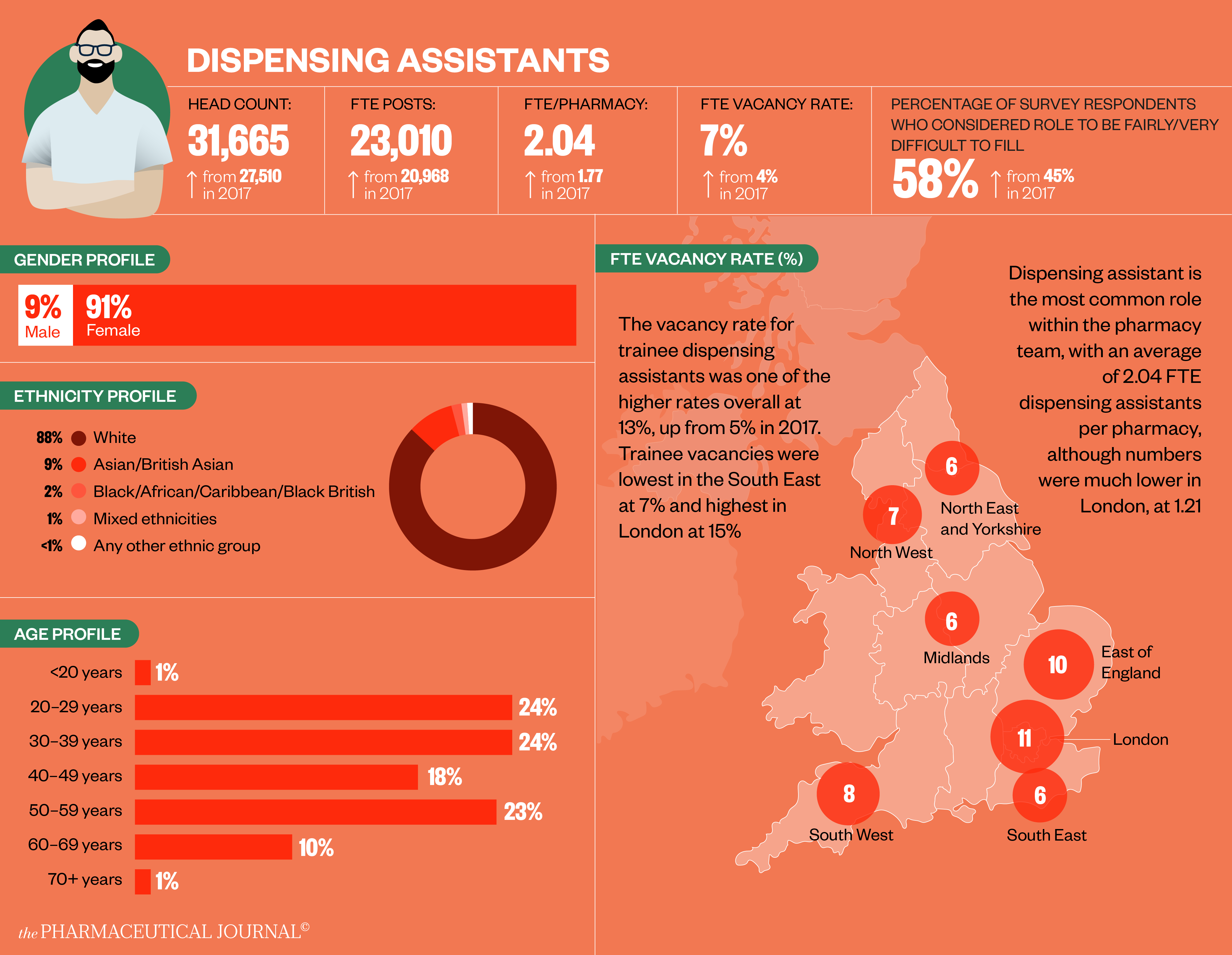
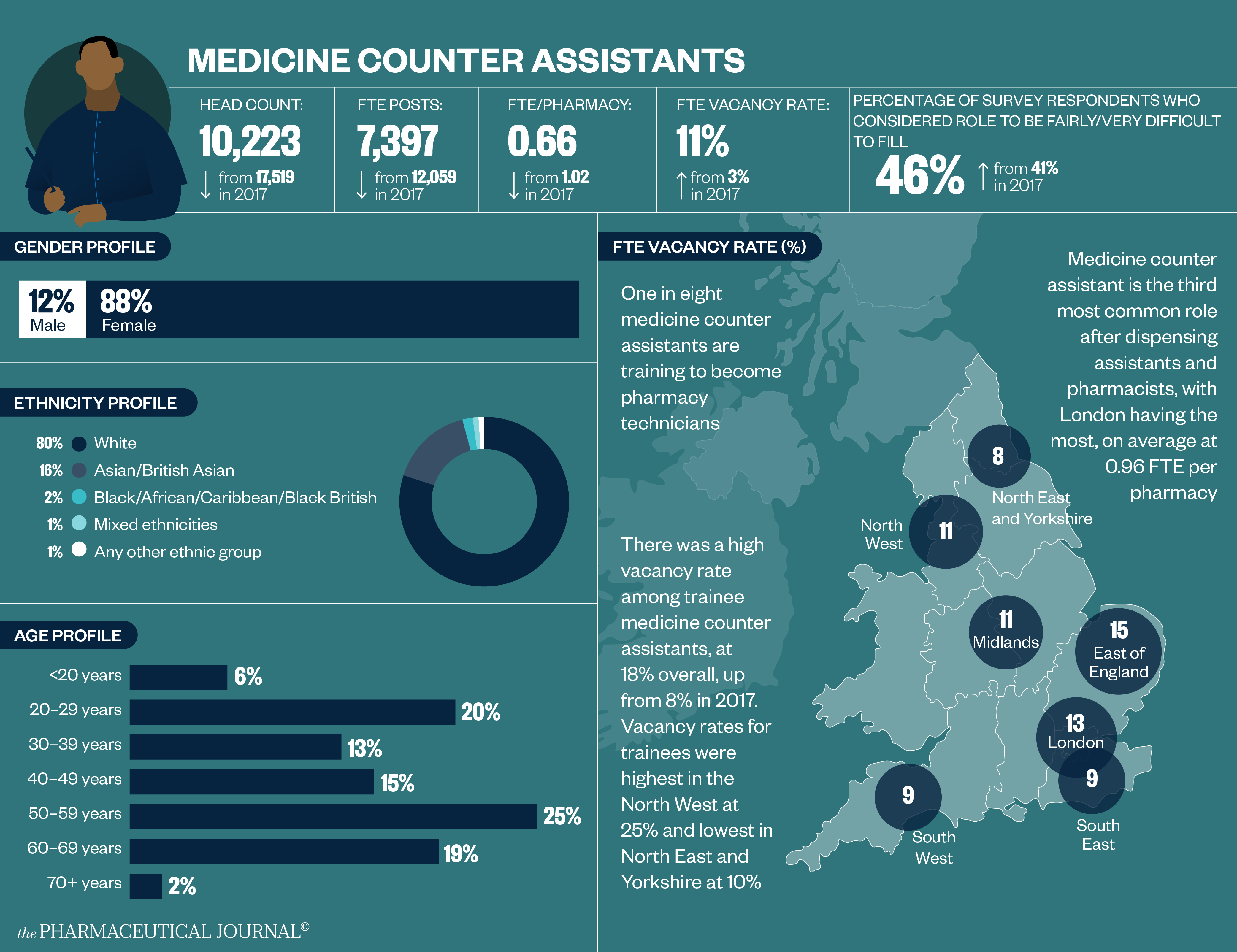
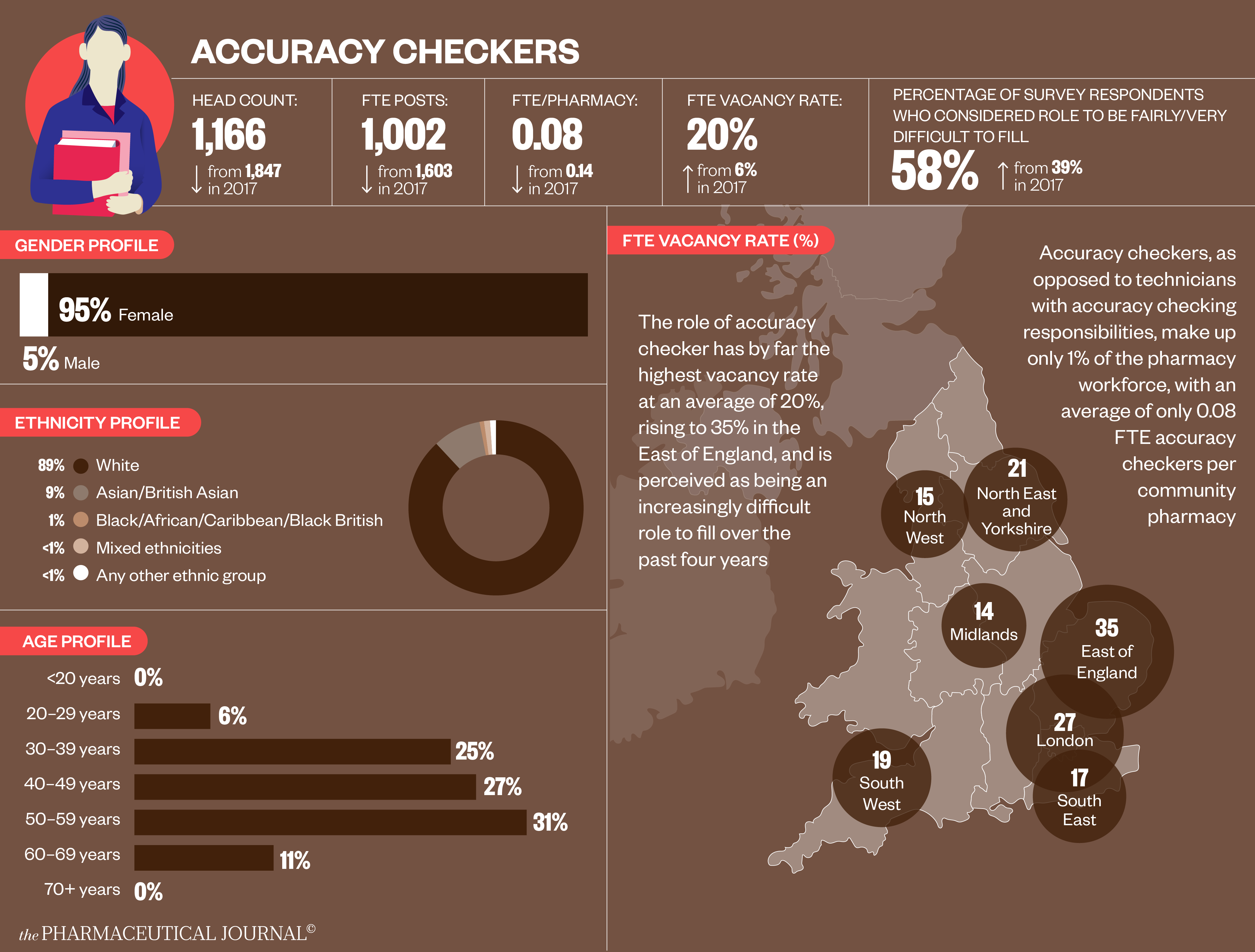
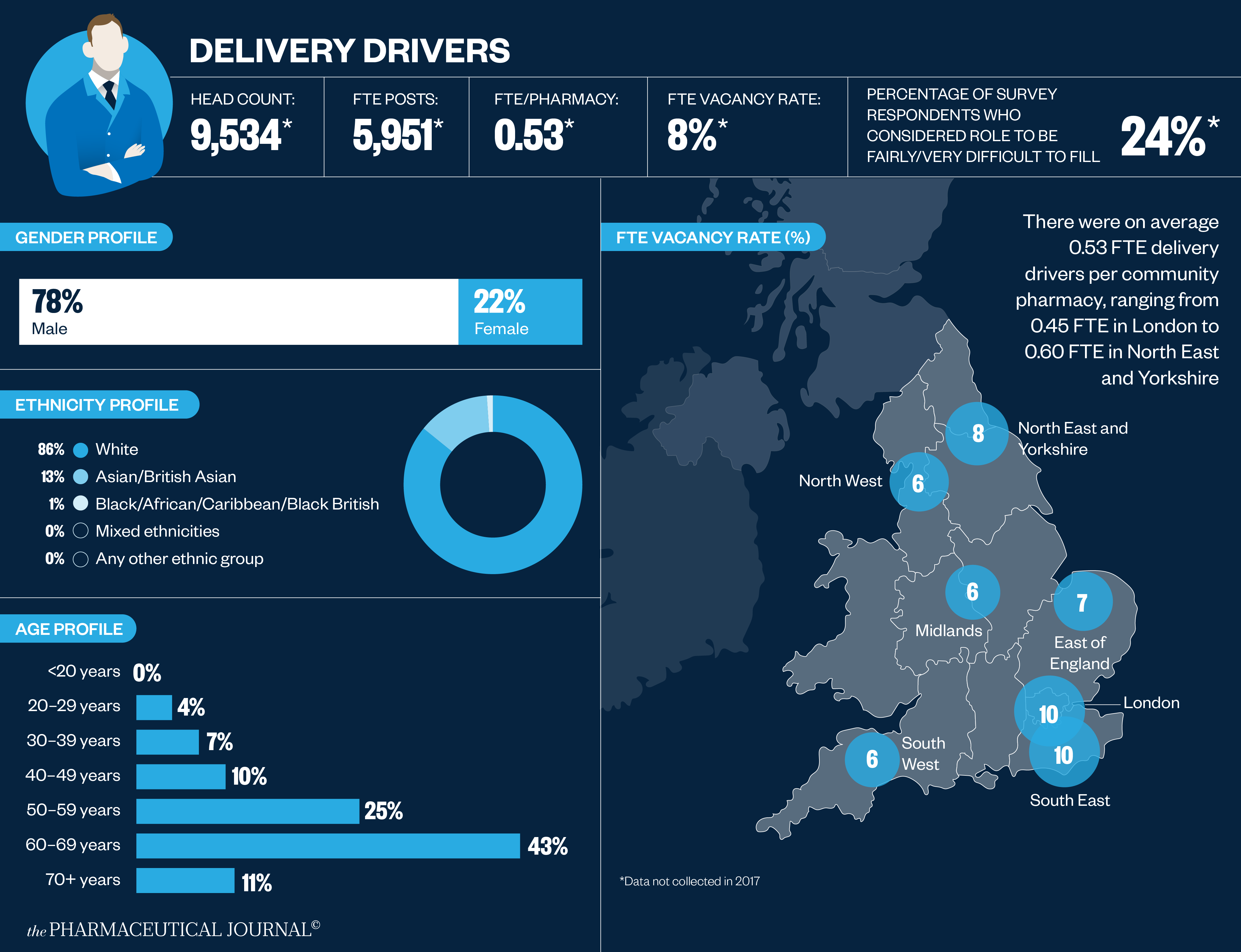
Box: Where these data come from
These data come from the Community Pharmacy Workforce Survey 2021, published by Health Education England. The survey is designed to provide a snapshot of the staffing of community pharmacies in England and measure those trends over time. The last survey was in 2017.
The report is based on a survey of 47% of community pharmacies in England that is extrapolated using probability weights, based on response rate by sustainability and transformation plan areas.
All percentages are rounded to the nearest whole figure.


